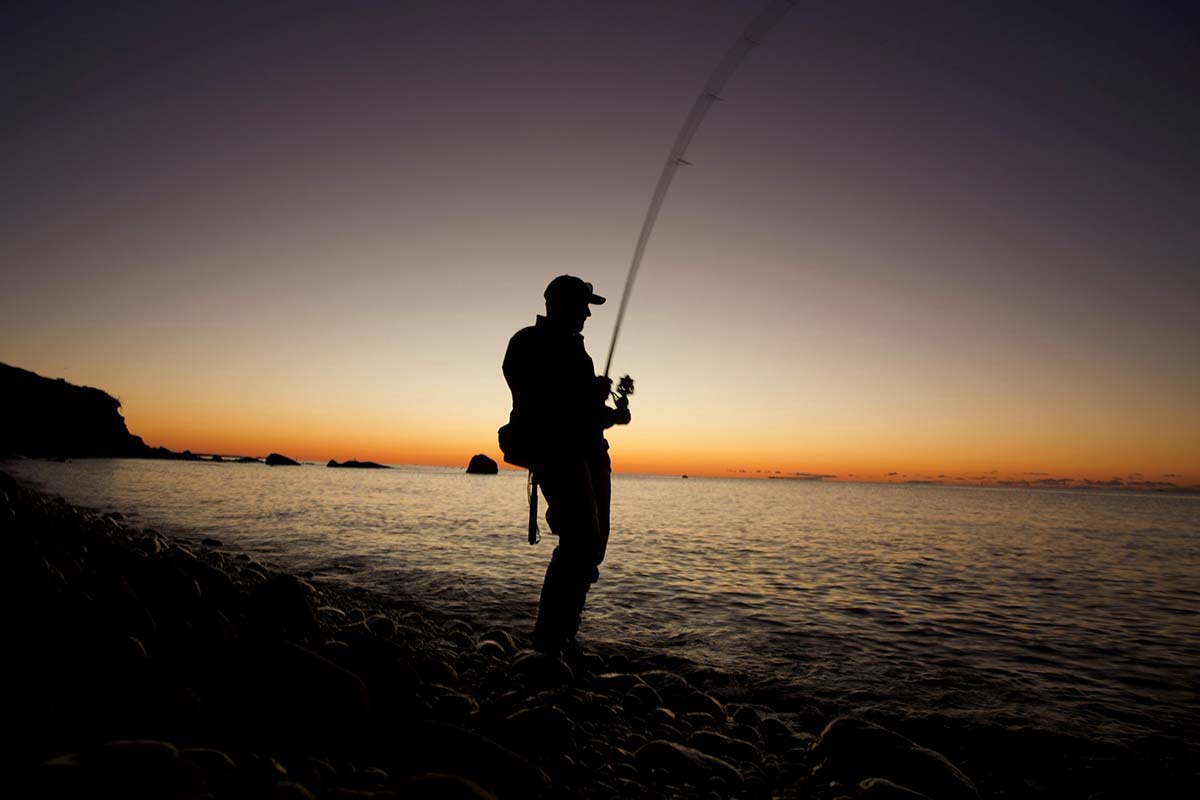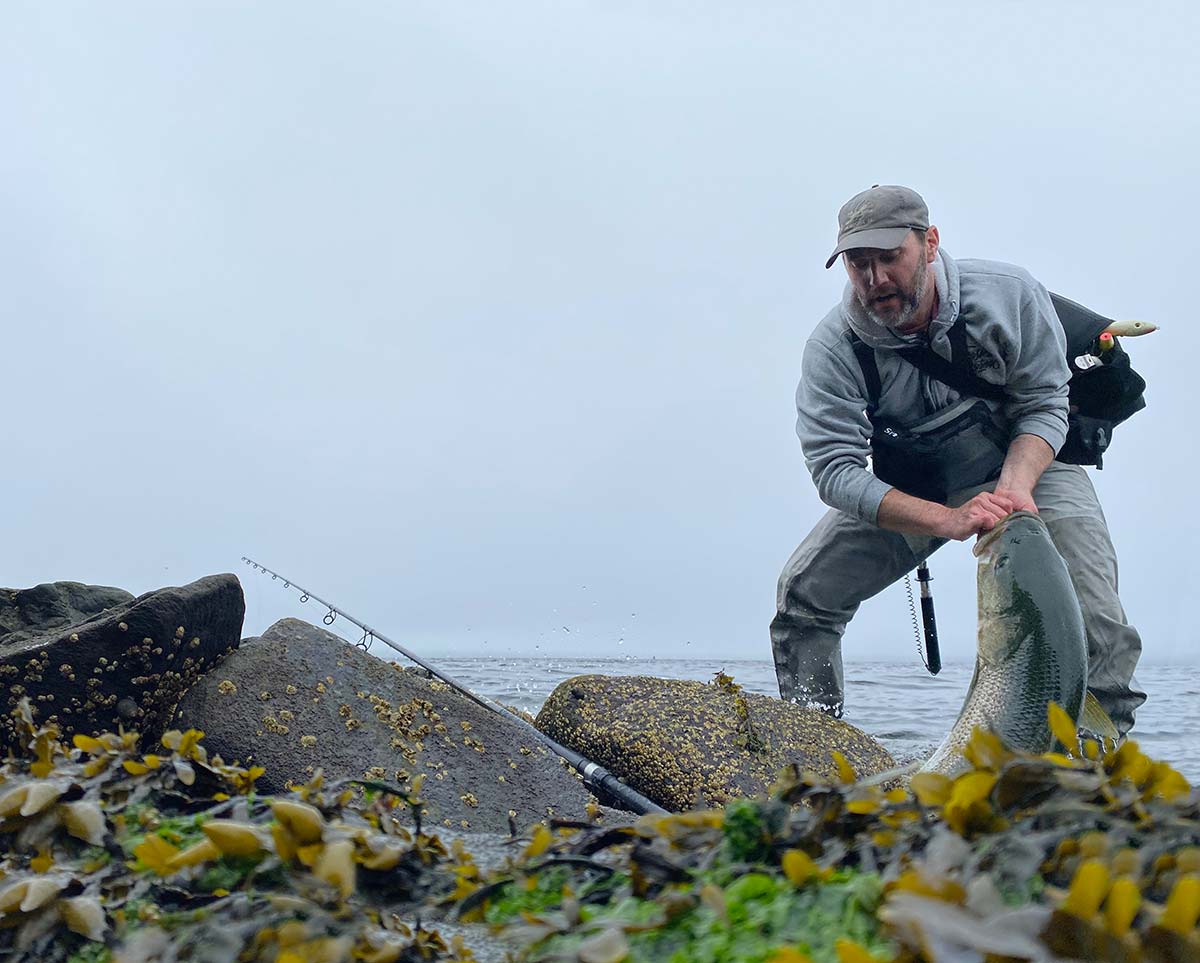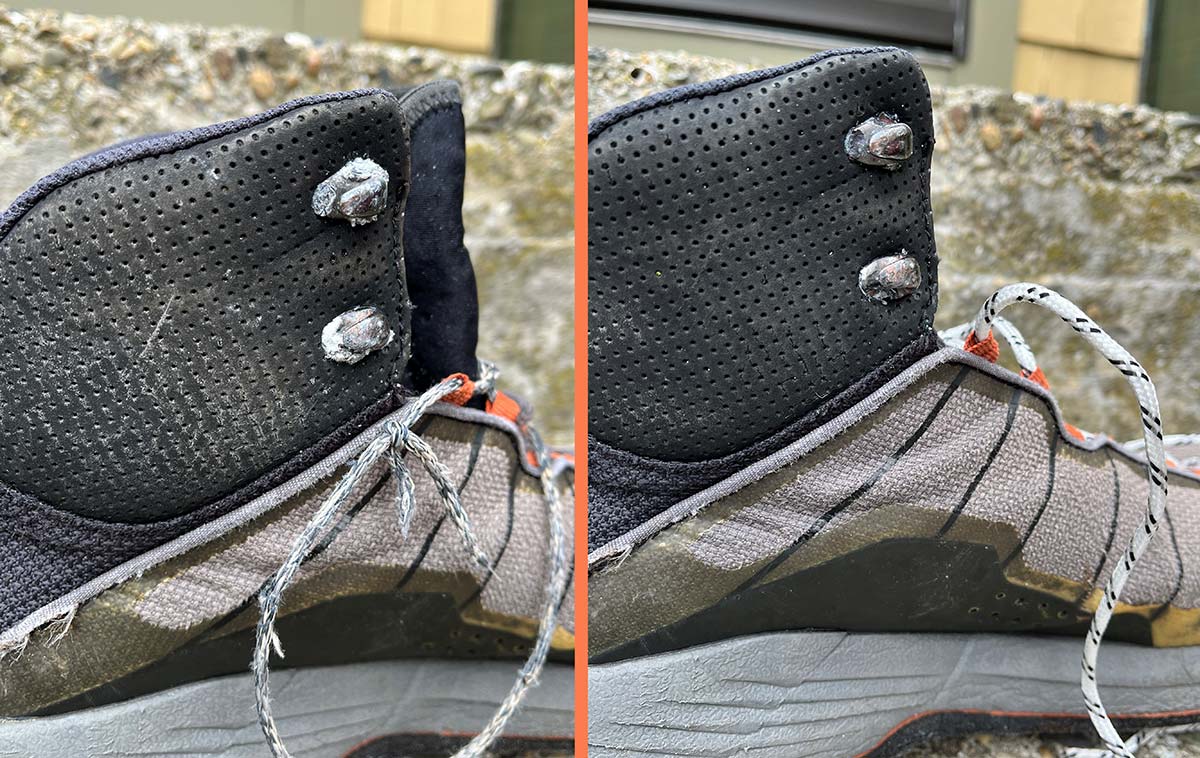
Taking care of your surf gear now will start next season off on the right foot.
The holidays are upon us and, for surfcasters in New England, that means breaking things down and putting them away for the winter. Giving in to the end of the season is a bittersweet surrender, there’s always a measured amount of melancholy but there are also feelings of relief.
For me, the relief stems from allowing myself to let my guard down and to stop thinking about striped bass 24 hours a day. There was a time when there was almost no process to ending my surf season, but as I’ve gotten older (and presumably wiser) I have learned that there is a huge benefit to properly closing out the season and setting myself up for the next one.
I wish I could tell you that I am very neat and organized during the fishing season, but that would be a lie. I have this awful tendency to leave things where I last touched them; this is why I have eight pairs of split ring pliers, they are all lost and found multiple times throughout the hustle of the surf season, but I can always put my hands on at least one pair. This is also probably why I have so many plugs, when situations arise that call for a specific thing, let’s say a black Super Strike Darter, if I can’t find one, I will run out and buy one and I regularly find brand new plugs in the packages that I don’t even remember buying!
You may be reading this and thinking, “Why would it be a good idea to take advice from a forgetful hoarder that doesn’t take care of his stuff?” I admit, I am forgetful and I definitely exhibit some hoarder warning signs that a psychiatrist might find ‘interesting’, but I actually do take very good care of my gear; in fact, from what I have seen, I take better care of my gear than most surfcasters. I’m not in need of an intervention, yet.
Outerwear First
One place where I think my level of care stands out above and beyond most is how I take care of my wetsuit, waders and boots. You literally can’t fish if these things are not in good working order. And I refuse to wear a smelly wetsuit. I’ve been stuck in vehicles too many times with other casters whose wetsuits smelled so bad I was practically choking in the passenger seat and I simply will not allow myself to be that guy.
So I methodically rinse my wetsuit after every single trip, in fact I wear it home and jump into the shower wearing it to ensure a full rinse of anything that might fester or ferment into a beast that can’t be stopped next time I’m in the truck with the heat on.
Furthermore, about once per month, I will soak my wetsuit in a tub of water and Dawn dish soap. This is a trick I learned from the owner of a dive shop when I was thinking about buying some expensive wetsuit soap, he told me not to waste my money and to use Dawn instead. When you think about it, Dawn is made to break down salts, oils and organic materials (food) that’s stuck on your plates—and that’s exactly what we need it to do when cleaning a wetsuit. A good soak in soapy water and a double rinse will go a very long way so that you won’t have to pretend that you don’t know where that spoiled kimchi smell is coming from next time you’re carpooling between spots.
Regular rinses and periodic soapy soaks will also work wonders for all of your other outwear, boots, belts, dry tops and heater tops will all last longer and stink less if you follow these steps. I also dunk my pliers and Boga Grip into the soap each time and rise them regularly to keep them in good working order.
At season’s end, you should perform another good, long, soapy soak and rinse. Then take a very close look at all of your outerwear looking for things that might need attention. I clean all of the metal components on my boots with a toothbrush and try to remove any salt buildup to mitigate corrosion. I oil my pliers and Boga and try my best to remove any rust, salt, or grime that has accumulated over the long season. I then turn my attention to my waders and wetsuit, checking zippers, clasps, pockets, and seams. If I find any issues I fix them, if I find holes in my wetsuit, I repair them with the black AquaSeal+FD. The stuff is amazing. Then I hang all of this stuff up in my basement with a dehumidifier running until everything is dry. Then I turn the suit inside-out and let the dehumidifier work on it for a couple more days before storing it in a large plastic bin until May.
Waders get their own special treatment for the simple reason that I don’t want to submerge them and I still use them throughout the winter. For these I wait for an unseasonably warm December day and lay them out on something flat in the back yard, a picnic table works very well. Next I grab a bucket of warm water and Dawn with a rag or sponge and give the exterior of the waders a light scrubbing, front and back, rinse them off with the hose and hang them to dry. If the inside of your waders is giving off an unpleasant aroma, drop a single serve coffee bag into each foot, the grounds will absorb funk and moisture and leave your waders smelling like a barista borrowed them.

Hard Goods
Next I focus on rods and reels. I use several setups over the course of a striper season—from a 9-footer in the spring, to an 11 during the bulk of the season, to a Canal setup, albie setup, blackfish setup and then a lighter stick that stays in my car until the bitter end. I rinse these (nearly) every time I use them, but I give them a more focused wash-down before storage or shipping them off to be serviced.
With rods, I find that’s it’s really important to thoroughly rinse all of the metal parts and any moving parts. So, using the ‘mist’ setting on my hose nozzle or a spray bottle, I soak down the guides and reel seat and I may bust out the Dawn and a toothbrush if I see any salt buildup or rust. I have heard that some anglers use wax or other polishes to further protect their guides, but I don’t do this. Similarly, some casters polish their rod blanks, I don’t do this either, a gentle wipe down works just fine.
My surf reels are all Van Staals, this is not me trying to tell you that the only reels suitable for the surf are from Van Staal, but they have never let me down so I stick with them. My reels get the same ‘mist setting’ rinse, I try to get the water into every crevice and moving part. If, when I turn the crank, I can feel any grit or hear any grinding, I will submerge the reel in a bucket of clean water and ‘whoosh’ it around for 10 to 20 seconds to see if I can dislodge it. For reels that will be going in for service, I just spray them down with Ardent Reel Kleen and let them dry. For reels that will be staying out of the shop, I will break them down—removing the spool, handle, rotor, roller and (where applicable) the bail. I will then clean and re-grease every moving part and all ‘meeting surfaces’ then reassemble before spraying them down with the same Ardent Reel Kleen solution.

Plugs & Purses
I have never been the type that rinses and dries all of my plugs after each trip, the best treatment they might get is a quick blast down into my surf bag with the hose while I’m rinsing other gear. I know plugs are more expensive now than they ever were, but I just can’t get onboard with treating my plugs—even my custom wood stuff—like fragile children that need to have a nice bath before being tucked in for the night. Maybe it’s because I build plugs and I have no issue with rewiring one if the swivel gets corroded? Whatever it is, my focus is always on the hooks and split rings, and those are changed regularly throughout the season. The end of season process is a longer one, assessing the full gamut of plugs used during the season and replacing any hooks or splits that look suspect. I make a big purchase of VMC and Salt-X treble hooks and BKK Inlines along with multiple bulk packs of Spro Power Split Rings and try to make sure I mow through the workhorse lineup before spring.
Plug bags get a little bit of a hybrid treatment because they are comprised of so many different things. Start by looking them over for damage, I have never found any issues on my MAK and Dark Star bags, but if I did, I would send them to a bag maker for repair. I start by opening up the bag and looking for rust stains in the fabric, these can usually be addressed by soaking them with white vinegar and allowing them to dry before proceeding with the same Dawn treatment as everything else, some rust stains may be impossible to fully remove. It’s normal for the grommets to tarnish and turn a dull bronze or even greenish color. If this bothers you, a paste made from kosher salt and white vinegar combined with a little elbow grease will remove the tarnish and you can restore the shiny luster with olive oil or a metal polish like Brasso. I typically do not go this route, but when they look especially bad, I will.
Once the bags have dried from their initial rinse, I focus on the Velcro. The Velcro is our main line of defense in the surf and if it is not working properly (forming a weak bond), there is a high risk of losing many expensive plugs in one outing. Most of the issues will happen on the ‘rough’ side of the Velcro, this is because it’s made up of thousands of tiny, bristly hooks. If you see lint, dry seaweed, short pieces of braid, grass or other items woven into your Velcro, use a plastic comb to dig the foreign matter out of the Velcro, you can use duct tape or a lint roller to remove the debris as you go until it all has been removed. The last step is to assess the tubes, if they are cracked or misshapen, contact the maker about buying a new set. Once the bags are dry, store them in a large plastic container with a lid. Do not leave them out, I have had two bags destroyed by mice in my garage; when the weather gets cold, mice will eat just about anything that tastes salty or sweet or even has the slightest traces of something organic on it. You’ve been warned.
Of course, there are other, more obvious and menial tasks that may need your attention, like changing spikes in your Korkers, swapping out worn lanyards and changing batteries in your lights, but if you take these steps to care for your gear this winter your stuff will last longer, stink less, work better and be ready to go when spring comes. And it’s that moment, when you decide that the real surf season is about to begin, that you’ll thank yourself (and me) for prepping and storing things properly at the end of the previous season so you can begin the next one with confidence.



